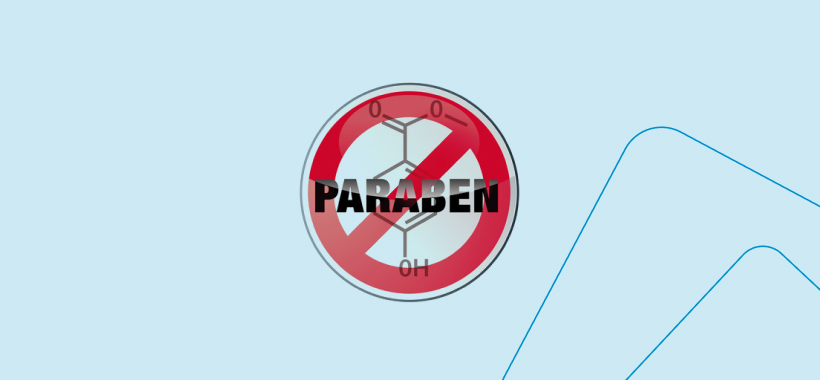According to the Article 15 of Regulation (EC) No 1223/2009, substances, which have been classified as carcinogenic, mutagenic or toxic for reproduction (CMR) of category 1A, category 1B or category 2 under Part 3 of Annex VI to Regulation (EC) No 1272/2008 (CMR substances) are prohibited for use in cosmetics. However, a CMR substance may be used in cosmetic products if the conditions laid down in the second sentence of Article 15 (1) or the second subparagraph of Article 15 (2) of Regulation (EC) No 1223/2009 are fulfilled.
Prohibited substances
Quaternium-15, Chloroacetamide, Dichloromethane, Formaldehyde, Perboric acid and Sodium perborate compounds, which are all CMR substances, haven’t fulfilled the requirements laid down in Regulation (EC) No 1223/2009 for restricted use in cosmetics. Therefore, they are prohibited for use in cosmetic products and should be added to the list of substances in Annex II to Regulation (EC) No 1223/2009.
Quaternium-15
Quaternium-15 is currently listed in Annex V to Regulation (EC) No 1223/2009 and is allowed for use in cosmetic products in a concentration of up to 0,2 % in ready for use preparation. This substance is a mixture of cis and trans isomers, of which the cis-isomer has been classified as a CMR substance of category 2. In addition, the Scientific Committee on Consumer Safety (SCCS) has concluded that the safety of Quaternium-15 cannot be established. Therefore, this substance has been deleted from Annex V and added to the list of prohibited substances in Annex II to the Regulation (EC) No 1223/2009.
Chloroacetamide
Chloroacetamide is currently listed in Annex V to Regulation (EC) No 1223/2009 as allowed in a concentration of up to 0,3 % in ready for use preparation. This substance has been classified as a CMR substance of category 2 and the SCCS has concluded that it is not safe for use in cosmetics when used in the concentration that is currently allowed. Considering this opinion and CMR classification, the substance has been deleted from the list of preservatives allowed in cosmetics and added to the Annex II to Regulation (EC) No 1223/2009.
Dichloromethane
Dichloromethane is currently listed in Annex III to Regulation (EC) 1223/2009 and is allowed for use in cosmetics in a concentration of up to 35 % in ready for use preparation. This substance has been classified as a CMR substance of category 2. In addition, the SCCS has concluded that dichloromethane used in a concentration of up to 35 % in hair sprays and in spray formulations in general, is not considered safe. Therefore, this substance has been deleted from the list of restricted substances in Annex III and added to the list of prohibited substances in Annex II.
Formaldehyde
Formaldehyde is currently listed in Annex III as allowed in nail hardening in a concentration of up to 5 % in ready for use preparation. It is also listed in Annex V as allowed in oral products in a concentration of up to 0,1 % and in other products in a concentration of up to 0,2 %. Formaldehyde has been classified as a CMR substance of category 1B. Substances classified as CMR substances may be used in cosmetics if, among other conditions, no suitable alternative substances are available. Since it has not been established that there are no suitable alternatives available for the purpose of hardening nails, formaldehyde has been deleted from the list of restricted substances in Annex III. In addition, since no application was made for other uses of this substance, it has also been deleted from Annex V and added to the list of prohibited substances.
Perboric acid and Sodium perborate compounds
Perboric acid and Sodium perborate compounds are covered by the hydrogen peroxide releasing substances in Annex III. They have been classified as CMR substances of category 1B. Here has also not been established that there are no suitable alternative substances available for purpose of oxidation of hair. Therefore, Perboric acid and Sodium perborate compounds have been deleted from Annex III and added to the list of prohibited substances in Annex II.
Boron compounds and Dibutyltin hydrogen borate
Some boron compounds, which are currently listed in entries 1a and 1b of Annex III, and Dibutyltin hydrogen borate have been listed classified as CMR substances of category 1B. Those boron compounds have been deleted from Annex III and added to the list of prohibited substances. Dibutyltin hydrogen borate has also been added to Annex II.
Substances not classified as CMR substances but prohibited for use in cosmetics
The Commission has consulted the SCCS on the safety of certain substances, which are chemically similar to substances classified as CMR substances. This concerns boron compounds (borates, tetraborates, octaborates, boric acid salts and esters such as MEA-borate, MIPA-borate, potassium borate, trioctyldodecyl borate and zinc borate), Paraformaldehyde and Methylene Glycol. They have been added to the list of prohibited substances in Annex II.
Restricted substances
For CMR substances Trimethylbenzoyl diphenylphosphine oxide, Furfural and Polyaminopropyl biguanide, requirements laid down in Regulation (EC) No 1223/2009 for restricted use in cosmetics have been fulfilled. Therefore, they may be used in cosmetic products.
Trimethylbenzoyl diphenylphosphine oxide (TPO)
- TPO is currently not included in the Annexes but has been added to the list of restricted substances in Annex III for professional use in artificial nail systems with a maximum concentration of 5 %
Furfural
- Furfural is used as a fragrance or flavour ingredient in cosmetic products and is currently not found in any of the annexes
- It has been added to Annex III with a maximum allowed concentration of 0,001 %
Polyaminopropyl biguanide
- Currently listed in Annex V with a maximum concentration of 0,3 %
- Based on the SCCS opinion on polyaminopropyl biguanide safety, it is allowed for use as a preservative in all cosmetics, except in applications that may lead to exposure of the end-user’s lungs by inhalation, with a maximum concentration 0,1 %

